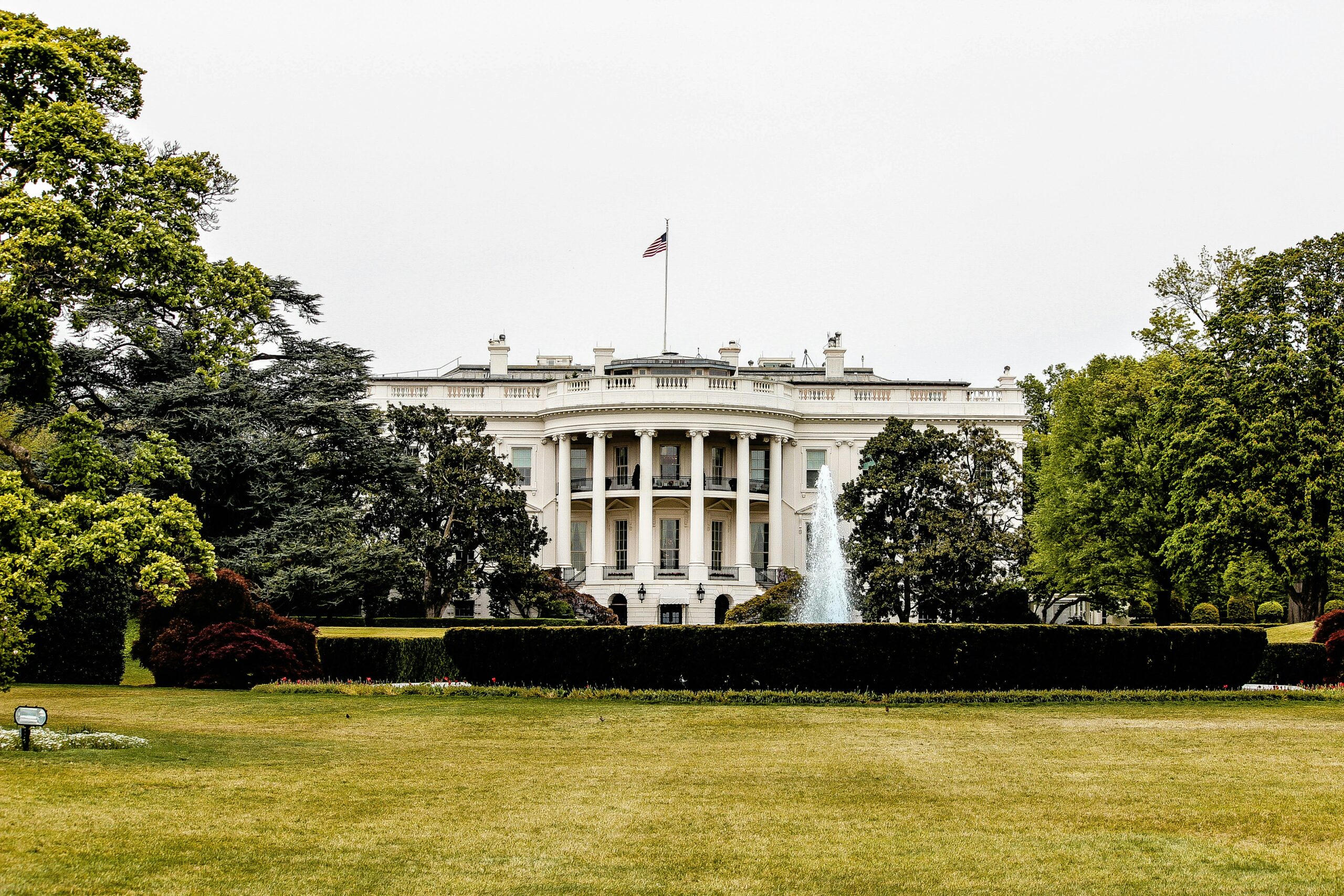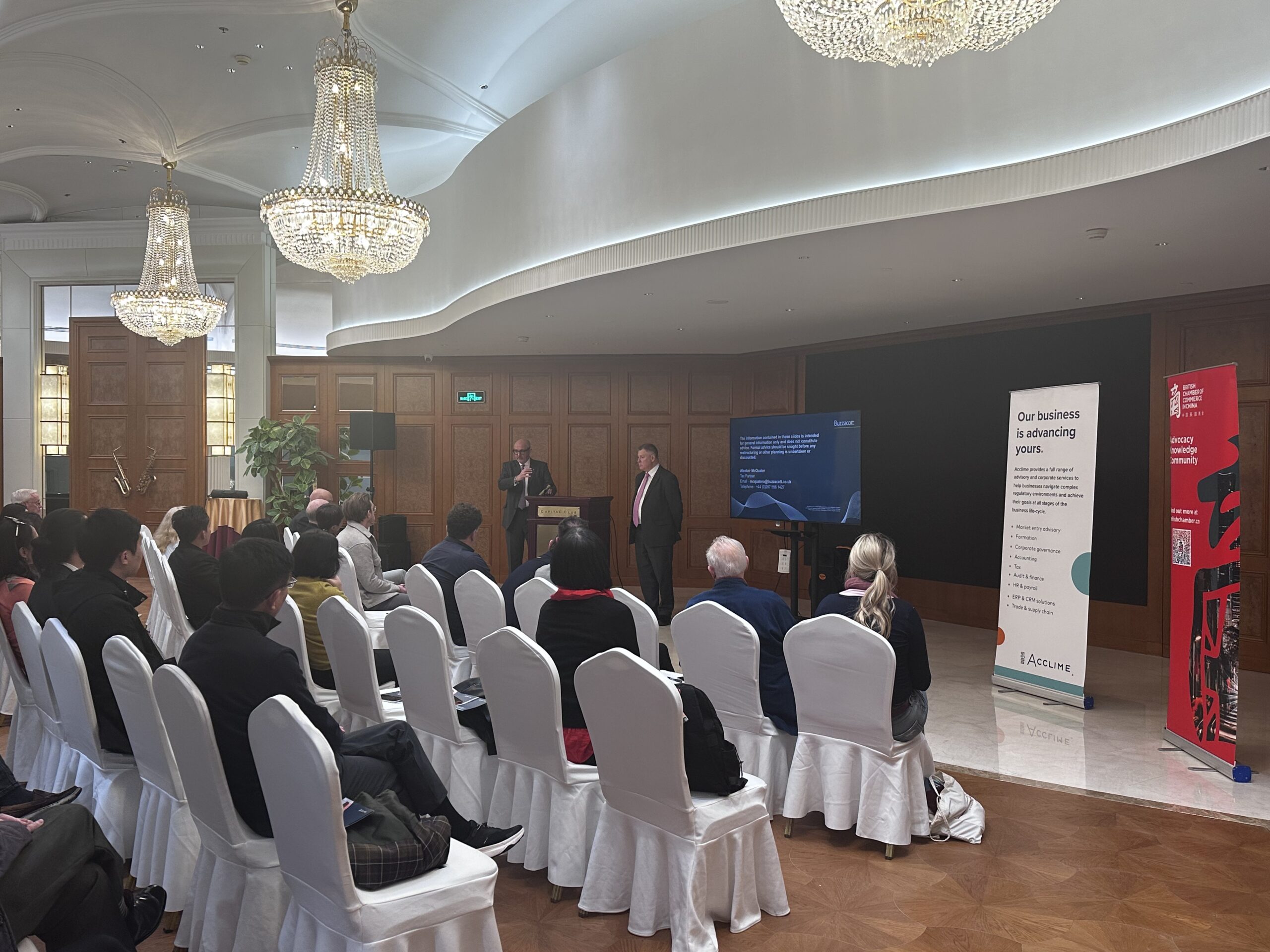Last Thursday, 27 November, the British Chamber of Commerce in China was delighted to co-host…

Policy Insights: Trump 2.0 Likely to Bring Unsettled and Unpredictable U.S.-China Relations
A note from the British Chamber of Commerce
As Donald Trump prepares for a second term in office, the UK government faces mounting challenges in navigating a more volatile US-China relationship. Trump’s return signals an escalation in US trade policies targeting China, with tariffs and potential decoupling measures likely high on the agenda. This shift complicates the UK’s own strategy, especially as the UK government has expressed a commitment to balanced engagement with China—a stance in contrast with the more hawkish rhetoric now emerging from Washington and Brussels.
US Senator Marco Rubio is currently expected to be appointed as the next Secretary of State and is anticipated to adopt a more assertive stance on China, which may pressure allies, including the UK, to align with a restrictive approach. Should Rubio not be appointed, it is likely that another figure with similarly hawkish views towards China will assume the role. This prospect, combined with Trump’s unpredictable policy choices, may limit the UK’s flexibility to pursue nuanced engagement with China. For a UK government committed to continuity and measured diplomatic relations, this could result in tensions between maintaining its autonomy and meeting US expectations for a tougher China policy.
A particular concern lies in the economic implications of these policies. With Trump favouring tariffs as a primary tool against China, the UK will likely feel pressure to take a firmer stance on Chinese imports to avoid discord with its closest ally. At the same time, the European Union’s own rhetoric on China has intensified, with increasing calls for ‘de-risking’ from critical sectors and supply chains. This broader shift leaves the UK balancing multiple, often contradictory pressures that risk isolating it if it diverges too far from either the US or EU approach.
For the UK government, the path forward may involve strategic diplomacy to protect its trade interests while addressing security concerns. Yet, as the US-China dynamic grows more volatile, the UK must carefully weigh the benefits of alignment against the potential economic impact and loss of control over its own China strategy. The coming months may test the UK’s ability to maintain its commitment to an engaged yet cautious approach, as pressure builds to choose sides in an increasingly polarised global landscape.
The following is a Policy Insight from British Chamber member APCO. APCO is a global advisory and advocacy communications consultancy, known for providing strategic insights to help clients navigate complex geopolitical and economic landscapes. In their latest analysis, APCO examines the anticipated impact of Donald Trump’s return to the US presidency on US-China relations, highlighting the likelihood of intensified tariffs and a more hawkish stance, which could introduce fresh challenges for both American businesses and international partners.
Trump 2.0 Likely to Bring Unsettled and Unpredictable U.S.-China Relations
 November 8, 2024
November 8, 2024
Elise Bukowski, Liz Wang
President-elect Donald J. Trump is set to return to the White House following an election campaign where he often described China in harsh and threatening terms while presenting vague and contradictory ideas regarding his approach to U.S.-China relations.
During his first administration, Trump initiated a period of rocky U.S.-China ties, largely defined by his trade war. The president-elect has promised to go even further in his second term while hinting at a desire to strike a new trade deal. This underscores that volatility could characterise his China policy throughout the next four years.
Second Iteration of Trump’s China Policy to Be Guided by His Inner Circle
The level of enmity present in Trump’s approach to China will be deeply coloured by his Cabinet choices. The president-elect often appears less hawkish on China than some of his closest advisers. Trump’s first-term trade czar, Robert Lighthizer, is all but certain to be featured in his second-term Cabinet. Lighthizer, who may be tapped in as Treasury or Commerce Secretary, is a well-known China hawk. Following his stint as U.S. trade representative, Lighthizer wrote a book calling for complete economic and technological decoupling from China, a move that would effectively upend the global economy. Billionaire John Paulson and former Secretary of State Mike Pompeo are contenders for the Treasury and Defence Cabinet positions, respectively. Pompeo is a long-time critic of China, calling the past 50 years of U.S.-China engagement a ‘failure’ in a 2020 speech. Similar to Trump, Paulson has flip-flopped on his China stance. This year, the billionaire back-pedalled on his original criticism of Trump’s tariff plan to champion what he refers to as ‘a need to decouple from China.’
As vice president, JD Vance will likely try to have a say in how the Trump administration handles Taiwan. While Trump’s rhetoric on Taiwan has been confusing, Vance has articulated his belief that the United States should focus defence support on Taiwan instead of Ukraine. Trump has suggested several times that he views the U.S. relationship with Taiwan as purely transactional, at one point suggesting that Taiwan should pay the United States for defence assistance. Regardless of specific Cabinet picks, Trump is set to surround himself with loyalists in his second-term presidency. This will result in less internal debate and a more straightforward path to enacting the hawkish China policies described during his campaign.
Trump’s Approach to Chinese Investment in the United States Is Inconsistent and Unclear
Just before the election, the Biden administration announced new rules limiting U.S. investment in certain Chinese technology sectors. Whether or not Trump will continue to build on this foundation remains unclear, as his messaging on Chinese investment has been replete with contradictions. The Trump campaign promised to ‘establish new rules to stop U.S. companies from investing in China and stop China from buying up America,’ implying that he favours strict investment restrictions. However, Trump has also suggested that he may welcome Chinese auto companies to build plants in the United States, clashing with growing concerns in the United States over data transfers from Chinese connected vehicles.
This is not the first time the president-elect has flip-flopped on Chinese investment in the U.S. While president, Trump drafted an executive order to ban Chinese-owned social media platform TikTok, citing national security risks. On the 2024 campaign trail, he abruptly changed his position, coming out in opposition to a bill forcing TikTok to divest from its Chinese owner or face a ban in the United States. The inconsistency of Trump’s stance on Chinese investment breeds uncertainty for both U.S. and Chinese companies with aspirations in each other’s market.
Trade to Remain the Core of the Trump Administration’s Approach to China
Standing before 600 business executives in October, Trump declared ‘tariff’ his favourite word. During his first term, Trump enacted duties that sparked a prolonged economic battle with China. Based on his campaign promises—placing 60% or higher blanket tariffs on Chinese goods, revoking China’s Most Favoured Nation trade status, codifying retaliatory tariffs and phasing out all Chinese imports of essential goods—trade will remain the focus of Trump’s second-term China policy. U.S.-China relations during his first presidency also centred on trade. However, trade patterns look significantly different today than they did in 2016. Chinese exports have grown in reach and sophistication, with China’s export model greatly diversifying in the last four years. Under these new trade dynamics, Trump’s tariff plan would likely disrupt the U.S. economy and global trade.
Despite the threat of draconian tariff policies, Trump may return to the negotiation table for a trade deal to address what he sees as unfinished business with China. Trump’s 2020 Phase One trade deal set unrealistically high targets for Chinese purchases of U.S. goods, targets that, as expected, were not met. This left Trump disgruntled that China has not fulfilled its obligations. When the newly inaugurated president turns his attention to China next year, he will likely seek out another trade deal. However, the nature of such a deal and its ability to coexist with the promised tariffs remain entirely unclear, especially if China hawks sitting in Trump’s Cabinet favour all-out decoupling.
Buckle in for an Unpredictable Four Years
Trump will enter the Oval Office on 20 January with more experience than in 2016, yet that experience is not likely to translate into more predictability. Contradictions in the president-elect’s rhetoric have only increased in the lead-up to election day, rendering any analysis on the immediate direction of U.S.-China relations highly speculative. Trump’s proclivity for a unilateral approach to foreign policy will also not make his presidency any more stable, as consideration for foreign partners’ interests will not thwart abrupt political or diplomatic actions. Some Chinese academics have even suggested that a Trump presidency could undermine the U.S.-led global order and grant China greater autonomy in multilateral diplomacy. One thing remains clear amid this uncertainty: the U.S.-China relationship could be in for a bumpy four-year ride.



